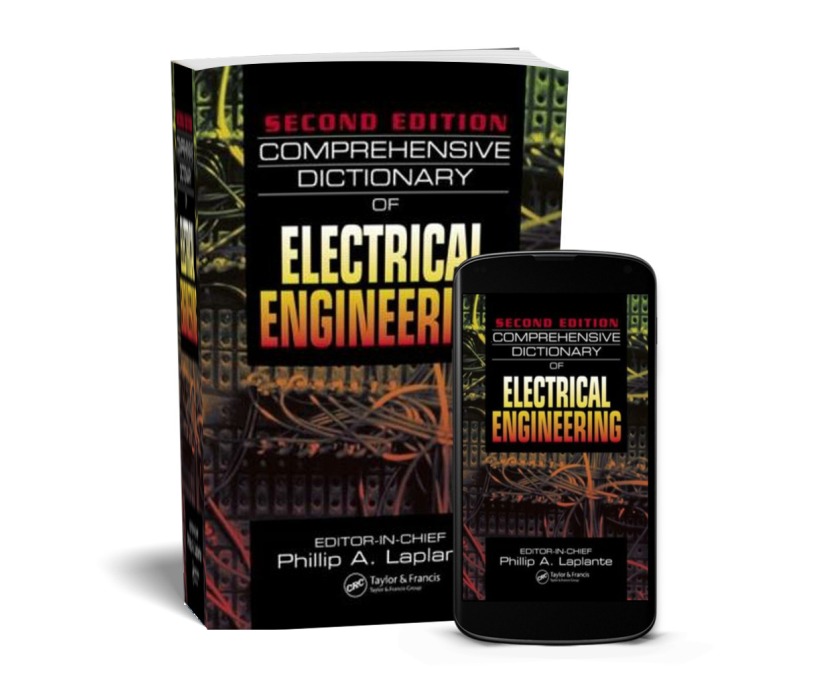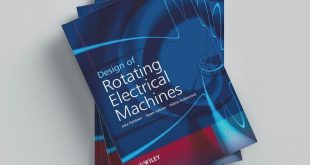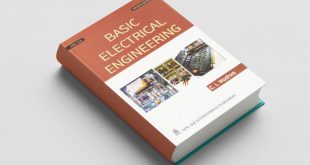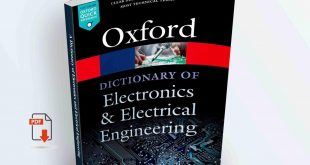Title: Comprehensive Dictionary of Electrical Engineering: A to Z Guide for Engineers and Students ⚡📘
Introduction:
In the vast and dynamic world of electrical engineering, a deep understanding of terminology is essential for effective communication, design, analysis, and innovation. The Comprehensive Dictionary of Electrical Engineering is a powerful reference tool that compiles and defines thousands of technical terms, abbreviations, and concepts spanning every corner of the discipline, from alternating current (AC) to zero sequence current.

Whether you’re a student entering the field or an experienced engineer refining your knowledge, this A to Z dictionary offers clear, concise definitions, real-world examples, and cross-references to related terms. It is designed to support learners, practitioners, educators, and researchers alike.
Key Features:
✅ Alphabetical Listing (A to Z):
Every term is arranged alphabetically to make browsing simple and efficient.
✅ Clear and Precise Definitions:
Each entry provides a concise explanation that focuses on accuracy and understanding.
✅ Coverage of Classic and Emerging Topics:
From Ohm’s Law to Smart Grids, from Magnetism to Microgrids, the dictionary includes both foundational and modern-day terminology.
✅ Illustrations & Diagrams (optional in full version):
Complex terms are supported by schematic diagrams and formulae where applicable (in the book format).
✅ Includes Cross-Disciplinary Terms:
Covers not just pure electrical terms but also control systems, electronics, telecommunications, and power engineering.
Sample A to Z Highlights:
🔹 A – Alternator: A machine that converts mechanical energy into alternating electrical energy.
🔹 B – Busbar: A metallic strip or bar used to conduct electricity within a switchboard or substation.
🔹 C – Capacitance: The ability of a system to store an electric charge, measured in farads (F).
🔹 D – Diode: A semiconductor device that allows current to flow in only one direction.
🔹 E – Earthing: Connecting parts of an electrical system to the ground to prevent shock hazards.
🔹 F – Frequency: The number of cycles per second in an alternating current (AC), measured in hertz (Hz).
🔹 G – Ground Fault: An unintentional electrical path between a power source and a grounded surface.
🔹 H – Harmonics: Voltage or current waveforms at multiples of the fundamental frequency that can distort power systems.
🔹 I – Impedance: The total opposition a circuit offers to the flow of alternating current.
🔹 J – Joule: The SI unit of energy, representing the work done when one ampere passes through one ohm for one second.
🔹 K – Kilovolt (kV): A unit of electric potential equal to 1,000 volts.
🔹 L – Load: The power consumed by a device or circuit.
🔹 M – Motor: An electrical machine that converts electrical energy into mechanical motion.
🔹 N – Neutral Wire: A conductor that carries current back to the source in an AC power system.
🔹 O – Overcurrent: A situation where the current exceeds the rated capacity of equipment, causing potential damage.
🔹 P – Power Factor: A measure of how effectively electrical power is being used, expressed as a ratio of real power to apparent power.
🔹 Q – Q-Factor (Quality Factor): Describes the damping of resonator circuits; a higher Q indicates less energy loss.
🔹 R – Relay: An electrically operated switch used in protection and control systems.
🔹 S – Switchgear: Assemblies of electrical disconnect switches, fuses, and circuit breakers.
🔹 T – Transformer: A device that transfers electrical energy between two or more circuits through electromagnetic induction.
🔹 U – Uninterruptible Power Supply (UPS): Provides emergency power when the main power source fails.
🔹 V – Voltage: The electrical potential difference between two points.
🔹 W – Watt: The SI unit of power, equivalent to one joule per second.
🔹 X – Reactance: The opposition to the change in current or voltage due to capacitance or inductance.
🔹 Y – Y-Connection (Wye): A method of connecting a three-phase system with a common neutral point.
🔹 Z – Zero Sequence Current: A component of unbalanced current in a three-phase system that can indicate ground faults.
Why This Dictionary Matters:
- 📚 Ideal for Academic Use: Simplifies study and preparation for exams, including GATE, FE, PE, and university assessments.
- 💼 Supports Professional Work: Assists engineers, technicians, and electricians in reading technical documents and system specifications.
- 🌐 Cross-Industry Relevance: Useful in industries like automation, renewable energy, power transmission, and electronics manufacturing.
- American Electricians Handbook
Conclusion:
The Comprehensive Dictionary of Electrical Engineering isn’t just a book—it’s an essential resource for every electrical professional and student. By demystifying the complex language of electrical science, it empowers readers to better understand systems, improve designs, troubleshoot effectively, and innovate with confidence.
📘 Explore the full A to Z—because understanding starts with the right words. ⚡
 Boilersinfo Boiler and Mechanical Power Digital Library
Boilersinfo Boiler and Mechanical Power Digital Library





